Debit and ATM Cards: Plastic or Paper?
| | | 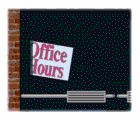 Most banking used to be done in person, face-to-face with a teller at your local branch . You would go into your credit union or bank , write out your deposit or withdrawal slips, and stand in line. You could only put money in or take it out when your credit union or bank was open, so you had to plan around holidays, evenings and weekends. Most banking used to be done in person, face-to-face with a teller at your local branch . You would go into your credit union or bank , write out your deposit or withdrawal slips, and stand in line. You could only put money in or take it out when your credit union or bank was open, so you had to plan around holidays, evenings and weekends. Then in 1978, the first “ automatic teller machines ” (ATMs) were introduced in our country. Now you could do banking any time of the day or night, seven days a week. Perhaps you wouldn’t need the human touch at all. At first, people resisted the idea of banking at a machine. This was new technology. Was it safe? Would it work properly? And where could you find one? Now ATMs are commonly found just about everywhere from your  favorite credit union or bank to grocery stores, restaurants, malls, gas stations and more. favorite credit union or bank to grocery stores, restaurants, malls, gas stations and more. Once seen as foreign, the ATM has gained great acceptance. Statistics kept on ATM usage show the average consumer visits one more than once a week! | Besides the convenience they offer you, ATMs are great for financial institutions, too. The reason is that most generate revenue from the fees charged per ATM transaction. It has also meant they could reduce the cost of a human handling your transaction and replace it with a machine.  So how do ATMs work? You’ll need three things: (1) money in a savings or checking account that allows ATM access; (2) an ATM card; and (3) a personal identification number or PIN. Your PIN is like a password – guard it carefully – that gives you access to your account. So how do ATMs work? You’ll need three things: (1) money in a savings or checking account that allows ATM access; (2) an ATM card; and (3) a personal identification number or PIN. Your PIN is like a password – guard it carefully – that gives you access to your account.
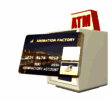 To use an ATM, insert your card into the machine, enter your PIN, then you can (in most cases): To use an ATM, insert your card into the machine, enter your PIN, then you can (in most cases):
1. Get cash from your checking or savings account 2. Get a cash advance from a credit card account 3. Deposit cash or checks into your account | | | | 4. Transfer money from one account into another  5. Find out your balance (some even offer a mini-statement) 6. Pay your credit card bill You can only use ATMs using the system(s) marked on your ATM card. The two biggest ATM systems are CIRRUS and STAR. Typically, if you use an ATM card at your financial institution or one of its branches, you won’t incur a fee (also called a surcharge). There are sometimes free ATMs in convenience stores or other places, too. Some ATMs charge as much as $3.00 per transaction. While this might not sound like much, imagine what you could do with a spare $156 – the amount you’d pay in fees (in this example) if you stop by an ATM once a week for a year. 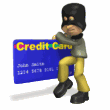 Keep safety issues in mind when using your ATM card. Notify your financial institution immediately if your card is lost, stolen or left in the machine. Don’t use an ATM by yourself at night. Be aware of your surroundings, and move away from the ATM as soon as you’ve completed your transaction. Keep safety issues in mind when using your ATM card. Notify your financial institution immediately if your card is lost, stolen or left in the machine. Don’t use an ATM by yourself at night. Be aware of your surroundings, and move away from the ATM as soon as you’ve completed your transaction.
| In addition to basic ATM cards, financial institutions now offer ATM cards that are also debit cards. Debit cards (sometimes referred to as check cards) enable you to take money out of your account to pay for what you buy. They are like instant, electronic checks. 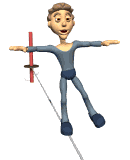 On-line Debit Cards are usually ATM cards with extra features. When you slide your card through a store’s machine, you have to punch in your PIN number to access the account. The machine checks to make sure you have enough money in your account to cover the purchase. Then money is immediately transferred from your savings or checking account into the store’s account. If there’s not enough money in the account, the machine will refuse your card. On-line Debit Cards are usually ATM cards with extra features. When you slide your card through a store’s machine, you have to punch in your PIN number to access the account. The machine checks to make sure you have enough money in your account to cover the purchase. Then money is immediately transferred from your savings or checking account into the store’s account. If there’s not enough money in the account, the machine will refuse your card.
 Off-line Debit Cards work in a similar way but not as fast. The store’s machine reads the card and creates a debit against your account, but it usually will not clear for a few days. Off-line Debit Cards work in a similar way but not as fast. The store’s machine reads the card and creates a debit against your account, but it usually will not clear for a few days. Some merchants will give you the option of getting cash back with a debit card. The amount you can get varies according to the business’ policy. If you choose to get cash back when using your debit card, this may eliminate another trip to the ATM and potentially another fee. | | | | |  If your credit union or bank belongs to a credit card organization, your debit card will have a Visa or MasterCard logo on it. That will enable you to use your debit card at 14 million merchants worldwide who use the Visa or MasterCard system. If your credit union or bank belongs to a credit card organization, your debit card will have a Visa or MasterCard logo on it. That will enable you to use your debit card at 14 million merchants worldwide who use the Visa or MasterCard system. You may want to inquire about getting overdraft protection as part of your debit card. Some financial institutions offer this feature so that if there is not enough money in your savings or checking accounts to cover what you’re buying, then your purchase goes on your credit card account. Debit cards provide convenience over using a check to pay for your purchases. You don’t have to provide identification as you would when you pay by check, so things go faster. 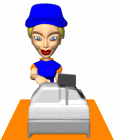 Stores, restaurants, hotels and other merchants often prefer debit and credit cards to personal checks. Some even offer discounts to people who pay with debit cards because they don’t have to pay an extra fee to credit card companies and they get their money instantly. Stores, restaurants, hotels and other merchants often prefer debit and credit cards to personal checks. Some even offer discounts to people who pay with debit cards because they don’t have to pay an extra fee to credit card companies and they get their money instantly. | As with ATM cards, you should ask about fees associated with using a debit card before you begin using one. Some banks charge a fee every time you use your card to buy things. 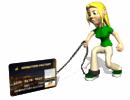 With the advent of “plastic” money, more and more people find themselves in debt. Remember, every time you use your ATM or debit card, you are spending money. While it may not have the same effect as using cash – it still should be considered the same. With the advent of “plastic” money, more and more people find themselves in debt. Remember, every time you use your ATM or debit card, you are spending money. While it may not have the same effect as using cash – it still should be considered the same.
The best advice is to keep track of your usage of ATM and/or debit cards, just as you would record checks you write. It’s easy to make trips to the ATM for $20 or request $20 back with your debit card transaction, but it’s hard to realize how quickly the “little things” add up. See what you learned.  Check out "Credit Cards: Say Charge It!" "Budgeting: A Plan for All Seasons" "Checkmate: Your Checking Account" | | |











Did this answer your question?